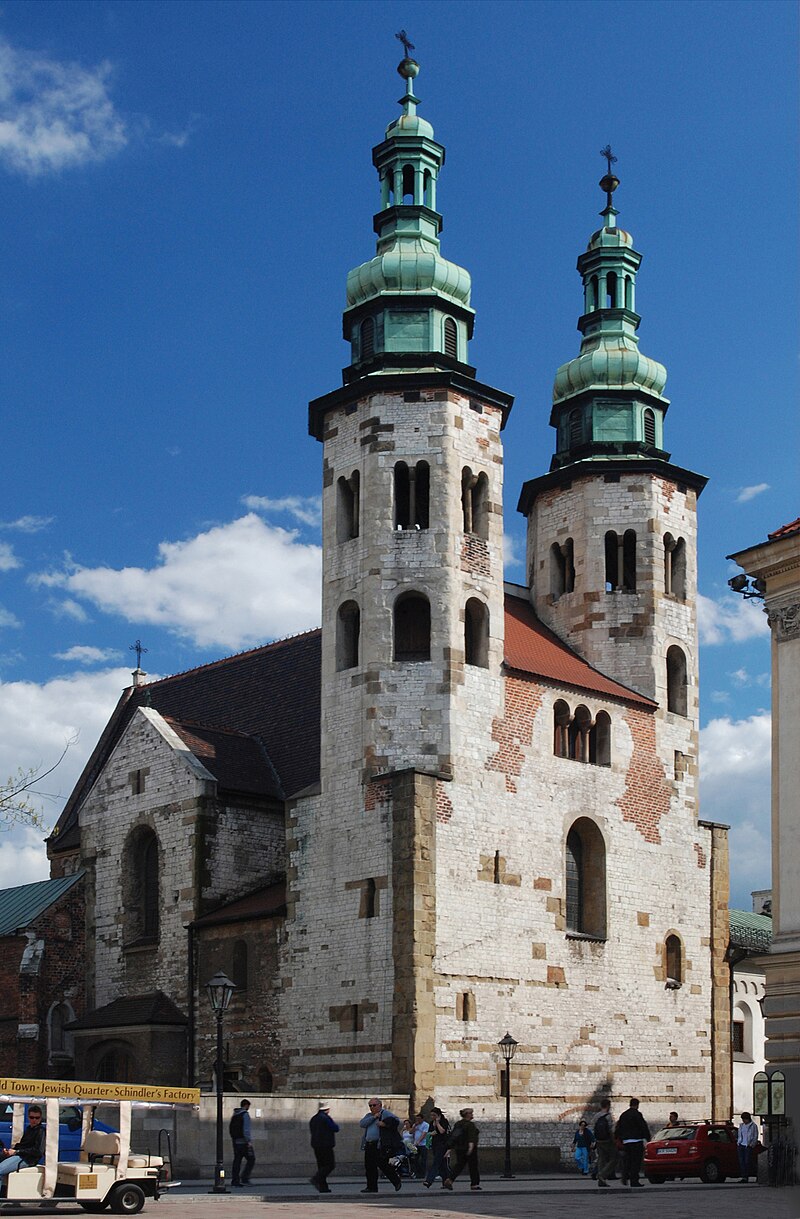 Stradom – Kościół Bernardynów.
Stradom – Kościół Bernardynów.
Przy pl. Bernardyńskim nr 2, od południowej strony Wawelu stoi kompleks klasztoru i kościoła Bernardynów pod wezwaniem św. Bernarda ze Sieny. Kościół, jakby cofnięty w głąb parceli, ustępuje miejsca dla rozległego placu, na którym odbywały się bernardyńskie odpusty. Ufundowana przez kardynała Zbigniewa Oleśnickiego świątynia powstała w 1454 r., ale dzisiejszy barokowy wygląd zawdzięcza przebudowie przeprowadzonej w drugiej połowie XVII w. Już pierwsze pobieżne spojrzenie do wnętrza kościoła pozwala zauważyć, jak kulisowo ustawione ołtarze boczne (obficie złocone) i reszta przepysznego wyposażenia „rozpychają się” i „kotłują” w obrębie nawy głównej. Z tego powodu sklepienie wydaje się niższe, ciążące ku dołowi. Imponująco prezentuje się brązowo-złote prezbiterium, wypełnione kształtami poskręcanych kolumn i wygiętych w łuk balustrad. Dwa najsłynniejsze zabytki, którymi szczyci się kościół Bernardynów, znajdują się w lewej nawie. Pierwszy to drewniany gotycki posąg św. Anny Samotrzeć (z Matką Boską i Dzieciątkiem), pochodzący z XV w. z pracowni Wita Stwosza, który stoi w kaplicy św. Anny. Drugi zaś zabytek, umieszczony na wprost okna, wywołuje zgrozę i uczucie przygnębienia. Jest to bowiem o XVII-wieczne malowidło danse macabre, jedno z nielicznych zachowanych w Polsce tego typu, przedstawiające taniec ze śmiercią, w którym biorą udział przedstawiciele różnych stanów. Symbolizują je kobiety ubrane w stroje wszystkich warstw społecznych; śmierć zaś wyobrażają kościotrupy. Centralną scenę otaczają mniejsze obrazki podpisane ciekawymi czterowierszami, których treści oddają przemyślenia ludzi baroku na temat śmierci. Takie ujęcie miało przypominać o kruchości życia ludzkiego i równości wszystkich – od parobka po magnata – wobec śmierci. Nie mniejszą sławą, aczkolwiek o zasięgu lokalnym, cieszy się kaplica z relikwiami św. Szymona z Lipnicy (w prawej nawie), bernardyńskiego zakonnika z XV w., który zasłynął ze swego oddania bliźnim.
W głównym nurcie franciszkańskim co pewien czas dochodziło do rozłamów na tle stosunku do ubóstwa i surowości reguły. Pierwszy w Polsce klasztor obserwantów, kolejnych „rygorystów’ franciszkańskich, powstał w 1453 r. u stóp Wawelu, przy kościele św. Bernardyna, na Stradomiu. Jego animatorem był przebywający w Krakowie św. Jan Kapistran. Od nazwy kościoła macierzystego zaczęto w Polsce nazywać to zgromadzenie bernardynami. W kulturze szlacheckiej Rzeczpospolitej bracia zapisali się jako kwestarze (np. ks. Robak z Pana Tadeusza). Słowo bernardyn stało się wręcz synonimem wędrownego kwestarza. Z bernardynów w 1605 r. wyłonił się następny zakon franciszkański, znowu, oczywiście, ściślejszych obserwantów – reformaci.








